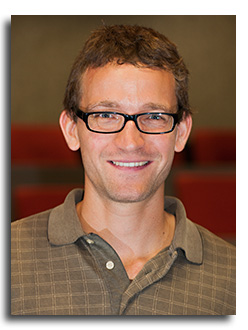
Abstract
Current solar cells are fundamentally limited by their inability to harvest photons with energies less than the absorber optical threshold. Thin‐film solar cells such as a-Si:H or organic solar cells, usually having band gaps above the optimum single‐band gap value of 1.34 eV given by the Shockley‐Queisser limit, and a much smaller volume to absorb the light, are particularly prone to this loss mechanism and thus suffer from imperfect usage of the solar spectrum. An elegant way towards overcoming this limitation and using a larger fraction of the incident light is the re‐shaping of the solar spectrum by upconversion (UC) of photons. Photochemical upconversion, as realized by triplet‐triplet annihilation (TTA) in organic molecules [1], operates efficiently from the near infrared and red part of the solar spectrum to the yellow or green, with measured quantum efficiencies of up to 30% [2].
Recently, we have demonstrated TTA-upconversion to improve the light harvesting of amorphous silicon and organic bulk heterojunction solar cells [3, 4]. In the present talk we will review these results, and then focus on pathways aiming to increase the photocurrent gain by TTA-UC to device-relevant levels: A first approach towards this end consists in exploiting micro-optical means for the concentration of light in the upconverting layer, which we have found to increase the solar cell photocurrent due to the inherently non-linear response of the UC yield on the illumination conditions. A second step is the transfer of the TTA-process into a solid-state medium, which will allow for a significant increase of the sensitizer dye excitation rate – and thus the UC efficiency – by concentrating the chromophores in a much smaller volume.
[1] Baluschev, S., Miteva, T., Yakutkin, V., Nelles, G., Yasuda, A., and Wegner, G. Phys. Rev. Lett. 97, 143903 (2006).
[2] Cheng, Y., Khoury, T., Clady, R. G. C. R., Tayebjee, M. J. Y., Ekins-Daukes, N. J., Crossley, M. J., and Schmidt, T. W. Phys. Chem. Chem. Phys. 12, 66–71 (2010).
[3] Cheng, Y. Y., Fückel, B., MacQueen, R. W., Khoury, T., Clady, R. G. C. R., Schulze, T. F., Ekins-Daukes, N. J., Crossley, M. J., Stannowski, B., Lips, K., and Schmidt, T. W. Energy Environ. Sci. 5, 6953–6959 (2012).
[4] Schulze, T. F., Czolk, J., Cheng, Y. Y., Fückel, B., MacQueen, R. W., Khoury, T., Crossley, M. J., Stannowski, B., Lips, K., Lemmer, U., Colsmann, A., and Schmidt, T. W. J. Phys. Chem. C , DOI: 10.1021/jp309636m (2012).
Click here to see all available video seminars.
Click here to go to the SPREE HOMEPAGE.
Brief Bio
Tim Schulze (speaking)
School of Chemistry, The University of Sydney
Tim F. Schulze1,3,*, Yuen-Yap Cheng1, Rowan W. MacQueen1, Tony Khoury1, Maxwell J. Crossley1, Bernd Stannowski2, Klaus Lips3 and Timothy W. Schmidt1
1School of Chemistry, The University of Sydney, NSW 2006, Australia
2Competence Centre Thin‐Film‐ and Nanotechnology for Photovoltaics Berlin (PVcomB),
Helmholtz‐Zentrum Berlin für Materialien und Energie, 12489 Berlin, Germany
3Institute for Silicon Photovoltaics, Helmholtz‐Zentrum Berlin für Materialien und Energie, 12489 Berlin, Germany
